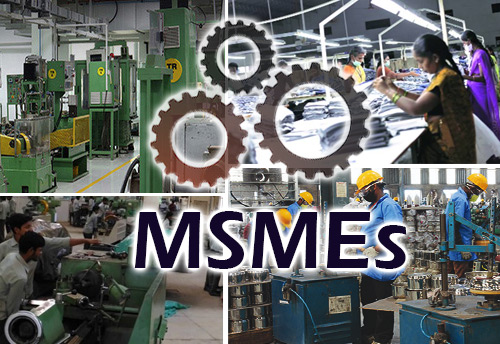
Govt proposes new bank to bridge credit gap for MSMEs
NEW DELHI : The government is considering a proposal to set up a separate bank for direct lending to the micro, small and medium enterprises (MSMEs) to deepen credit flows to the under-penetrated sector and thereby boost economic activity and job creation.
Currently, the Small Industries Development Bank of India (SIDBI) provides largely refinance to banks that lend to MSMEs, letting the cost of finance to these units reduce. State financial corporations and state industrial development corporations among others lend directly to units in the MSME sector.
According to a report, MSME credit penetration is still 14% in India compared with 50% in the US and 37% in China. There is a credit gap of Rs 25 trillion for the Indian MSME sector, reflecting the large untapped credit market.
“There is a need to set up a separate bank for the MSME sector to help address the direct credit shortages,” an official said, adding that such a proposal is under consideration. The government would take a call on the proposal at an appropriate time, the official added. Among the details to be worked out is the ownership structure of the bank, which might include a hybrid (public-private partereship) model.
Access to adequate, timely and low-cost finance is seen as a key bottlenecks, stymeing MSMEs’ growth to bigger enterprises.
The outstanding credit to the MSMEs by scheduled commercial banks expanded by 20.9% annually to Rs 26 trillion at the end of December 2023.
The 64 million-strong MSMEs are the backbone of the Indian Economy. MSMEs account for over 110 million jobs or 23% of the country’s labour force, making it the second-largest employer in India after agriculture. They contribute 27% of India’s GDP, 38.4% of the total manufacturing output, and 45% of the country’s total exports.
“A separate bank which understands the needs and the working of the MSMEs is required,” said Sandip Kishore Jain, President of the Federation of Indian Micro and Small & Medium Enterprises.
Large banks don’t understand the requirements of the MSMEs, Jain said, adding that in some European countries, MSMEs are clubbed together with home loan customers as both are small borrowers.
All India Association of Industries President Vijay G Kalantri said if not a new bank, the SIDBI should be converted into a full-fledged bank for direct lending to MSMEs instead of focussing on just refinance.
Kalantri also said that MSMEs should be given loans at the same interest rate as housing, i.e., at the rate of 6% for exports and 8% for regular domestic production activities. Currently, he said the bank interest rate for MSMEs is 11-13% and for exports 8-9%. He also flagged that MSME credit as a share of their output has declined to around 8.3% from 12% earlier.
SIDBI was established under an Act of Parliament in 1990. The Government of India (20.85%), State Bank of India (15.65%), Life Insurance Corporation of India (13.33%) and National Bank for Agriculture and Rural Development (9.36%) are its majority shareholders.
It has access to these low-cost funds, which are made available by banks against their shortfalls in meeting their priority sector lending (PSL) targets. The micro and small enterprise (MSE) Refinance allocation for FY24 was at Rs 84,000 crore.
SIDBI’s growth prospects remain linked to the extent of coverage achieved by SCBs in meeting their priority sector lending (PSL) targets. As SCBs progressively achieve higher PSL targets, the overall allocation under MSE funds could drop, thereby affecting the growth prospects in the long term, Icra had said in a report.
